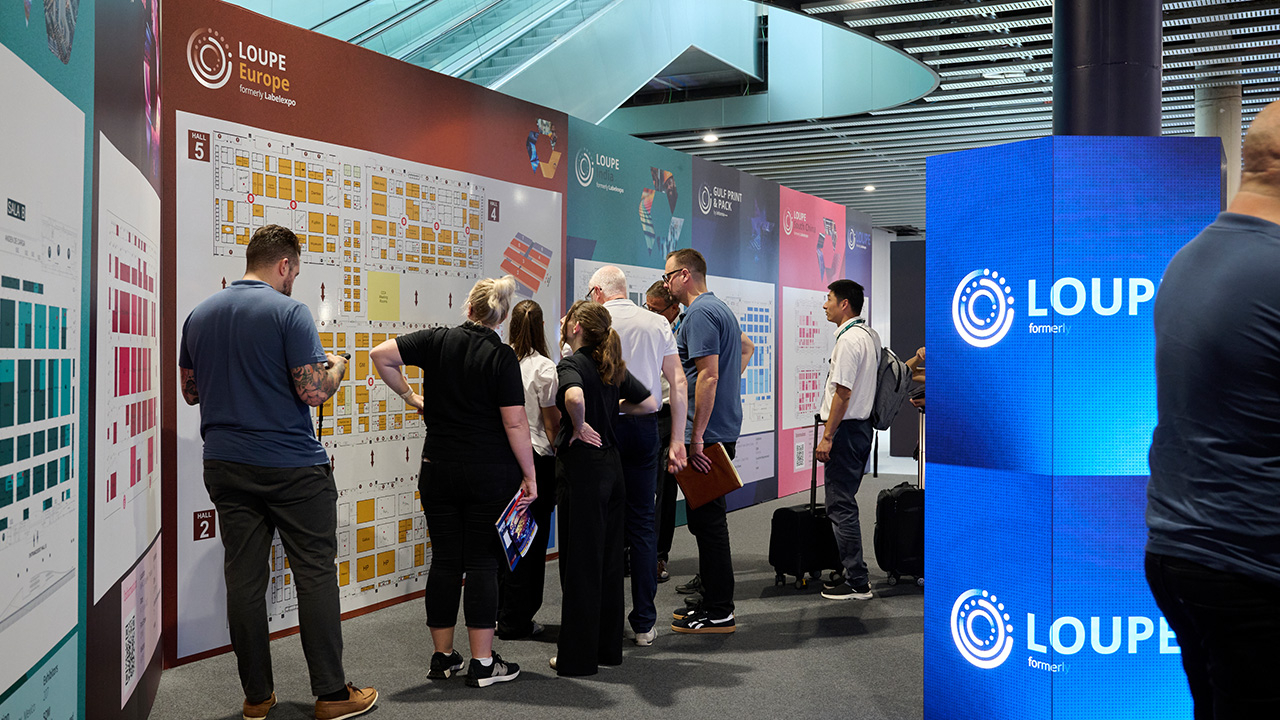The touch advantage
New data confirms what we’ve always suspected about premium packaging.

You’re about to go down a scientific and ultimately satisfying rabbit hole with me. That’s because I’m geeking out on the latest research study about the competitive advantages of touch and its impact on consumers’ buying behavior. So, hold onto your substrate, things are about to get real.
The ‘Touch Advantage’ study is a collaboration between Sappi and Clemson University. As a packaging designer and strategist, I co-authored the study, along with Dr Andrew Hurley, professor of packaging science at Clemson, and Sahil Bhayani, a master’s student, who wrote his thesis based on this research.
The study takes a deep dive into shoppers’ behaviors as they engage with packaging. It sets a new standard for a comprehensive understanding of the influence that packaging has on consumer actions and purchasing.
While many of us in the industry know intuitively that touch is important to shopper engagement, sales and post-purchase satisfaction, it has been just a hypothesis — until now. This study set out to prove this hypothesis, so that when we go to our stakeholders — to brands, to converters, to our clients and our clients’ clients — we can speak to measurable, quantifiable research about the return on investment of haptics and premium packaging.
Let’s dig into the details.
The research
The ‘Touch Advantage’ study sought to answer three overarching questions:
1. What is the correlation between touching a package and sales?
2. How does premium packaging affect consumer perceptions of product quality?
3. How does sensory marketing affect post-purchase experiences, customer satisfaction and reviews? (My next column in Labels & Labeling will cover the methodology, exploration and results of this question.)
We brought 60 participants into a staged retail space. We gave them a shopping list and asked them to buy a variety of products. The items included things like health and beauty items, confectionery foods and electronics.
We observed, counted, compared and measured to collect a variety of quantitative data, and compile statistics that can be used for ROI validation.
We asked the participants for their opinions about their shopping experiences, packaging and premium materials throughout the study to inform the qualitative data. That enabled us to compare the quantitative data (what we observed them doing) with the qualitative data (what they think and say they do). Oftentimes, the two contradict each other.
The third type of data that we collected is biometric data, which allowed us to measure and understand participants’ unconscious responses. When people checked in for the study, they were outfitted with eye-tracking glasses that enabled us to see exactly where the participants’ attention was, what each person was looking at, and for how long. Additionally, we could track what they touched and the amount of time they spent touching an item.
We also looked at facial expressions in order to record and analyze participants’ emotional responses.
The fourth type of data we collected is sales data. We took the biometric data and cross-referenced it with what each participant bought, so that we could see how a person’s attention and what they touched impacted their purchasing behavior. Further, we plugged that information into statistical models to determine repeatability. That is, would we get the same results if the study were conducted again? This part of the study enabled us to soundly predict various likelihoods of repeat behaviors and actions.
And thus, the hypothesis and theories were proven: The more people engage with packaging, the more likely they are to purchase the item. The data further showed that attention is the essential first step to a sale. That is, seeing starts the sale, and touching closes the sale. If you think about it, we cannot purchase an item in a store without touching it.
At this point, it’s important to review the neuroscience of touch, as I’ve written about in past articles. More than half of our brain is devoted to processing sensory experiences — our sense of sight, sound, smell, taste and touch. Our hands and fingertips have more touch receptors than any other place on our body. Psychologically, when you touch an item, it triggers a series of feelings, such as perceptions of quality and emotional attachment.
When you’re shopping and you reach out and touch an item, you activate a phenomenon called psychological ownership.
This means that simply touching an item increases our feeling of ownership. It’s the sense that ‘this is already mine’, even before you buy it. Once psychological ownership is activated, it triggers a second phenomenon: the endowment effect. The endowment effect refers to our willingness to pay more for an item that we either own or that we think we own.
Whether you’re a packaging designer, converter, finisher, substrate manufacturer or any other participant in the packaging a the endowment effect, and they’re willing to pay more for it. Even before they reach the checkout, they have already decided to purchase the item and consider it theirs.
Comparing premium and plain packaging
To connect these phenomena regarding touch to our study, we examined the differences in behavior between premium packaging and non-premium packaging. We defined premium packaging as being produced on the highest grade of substrate, Solid Bleached Sulphate (SBS). We further defined premium as having at least one embellishment, such as an embossing, a spot gloss or a foil.
For the non-premium packaging, we printed it on coated recycled board (CRB), a recycled board that is backed by a kind of chipboard and has a coating on the outside for four-color printing.
The key takeaway is untouched is unsold
In the study, we codified the nuances of how people touch. Do they touch but leave the package on the shelf? Do they touch and turn it to read a side or back panel? Do they pick it up by itself, or do they hold two items and compare them? Then we looked at touch frequency (the number of times someone touches a package) and touch duration (how long someone touches a package). In our study, people touched a package anywhere from three seconds to three minutes.
Here’s what we found: When a shopper touches a premium package two times, they are 50 percent more likely to purchase it.
Just two times, and that product is halfway to its new home. If a person touches it four times, it’s 90 percent likely to be purchased.
Do you think that non-premium packaging had the same results? It didn’t.
What we found is that a shopper needs to touch plain packaging three times to be 50 percent more likely to purchase it. That might seem negligible, but when consumers want to get in and out of a store quickly, when there are thousands of items competing for their attention, brands know they need to convert people from shopper to buyer as fast as possible. And if they want shoppers to choose their products as fast as possible, premium packaging has the competitive advantage.
Similarly, our research found that when someone touches a premium packaging for 17 seconds, they’re 50 percent more likely to purchase it. However, if that package is on CRB, it takes 41 seconds for them to be 50 percent more likely to purchase it. Again, premium packaging has a competitive advantage to conversion, when every second counts.
And that’s how the study led us to this principal understanding: While capturing attention is instrumental to starting the sale, touch is pivotal in closing the sale.
So, when it comes to the study’s overarching question: What is the correlation between touching a package and sales? The key takeaway is untouched is unsold.
On to the second question of our study: How does premium packaging affect people’s perceptions of quality? In this part of the study, we used a simple A/B testing method. We asked participants to purchase earbuds, but they weren’t the Apple brand. One product was sold in premium packaging and the other product was packaged in CRB. What we found is that people preferred the premium packaged earbuds three times more than the plain.
To examine this more deeply, we did a second test. We selected a category that people would be less familiar with, CBD serum, and we created three different brands, each with the same ingredients and claims. That way, when participants were comparing brands, the copy on the packaging was not a differentiator. Then, within each brand, the participant had four choices: three premium packages on SBS, with either a spot gloss, an embossing or a foil; and a non-premium CRB package.
Here’s what we found: people purchased the CBD serum in the premium packaging 13 times more than the plain packaging. In fact, 98 percent of our participants touched premium packaging, and 93 percent of them purchased the premium. Meanwhile, only 63 percent of people touched the plain package, and only 7 percent of our participants purchased it.
When you unpack that further, 37 percent of people did not even touch the plain packaging; 56 percent of the people touched the plain packaging but didn’t purchase it.
An intriguing data point that we hadn’t thought to research actually surprised us: When given the choice between the different types of premium packaging, nearly 60 percent of our participants purchased the one with a foil embellishment.
The key takeaway from the study’s second overarching question is clear: premium outperforms plain.
A quick recap
If I were going to make T-shirts with the study’s prime insights as they pertain to the overarching questions #1 and #2, the first shirt would say: Untouched is Unsold. Remember the data? When someone touches a premium package just twice, they’re 50 percent more likely to purchase it. The second T-shirt would say: Premium Outperforms Plain. Think about the CBD serum. It sold 13 times more when it was premium packaged. One thing is clear: the power and nuances of touch as it relates to shopper engagement, sales and post-purchase satisfaction are much more than a hypothesis; it’s science.
Stay tuned for a follow up to this article. I’ll cover the research, methodologies and results of the study’s third overarching question: How does sensory marketing affect the post-purchase experience, customer satisfaction and reviews? We’ll dive into e-commerce purchasing and consumers’ post-purchase thoughts, behaviors and actions.
Stay up to date
Subscribe to the free Label News newsletter and receive the latest content every week. We'll never share your email address.


